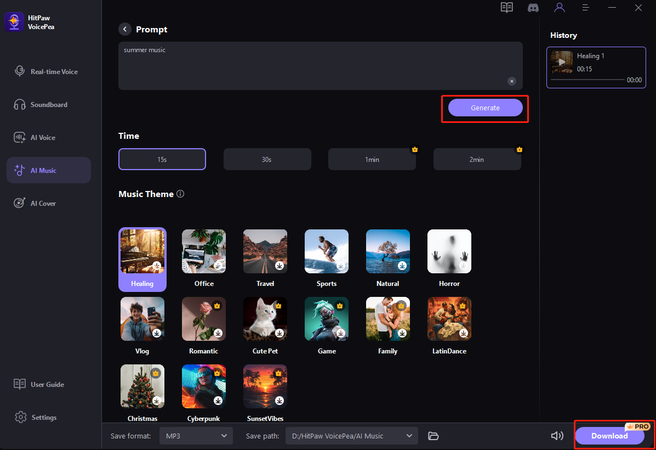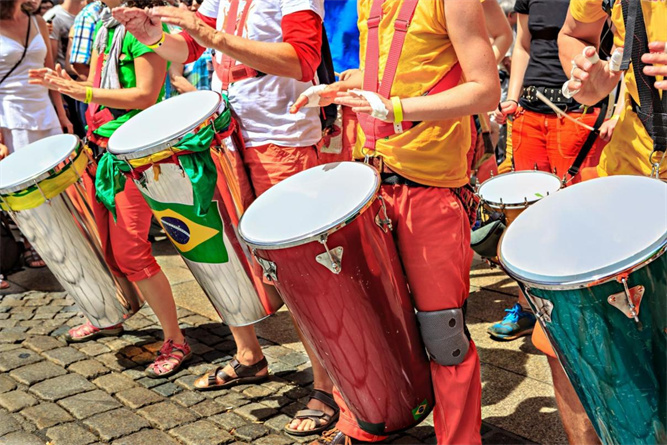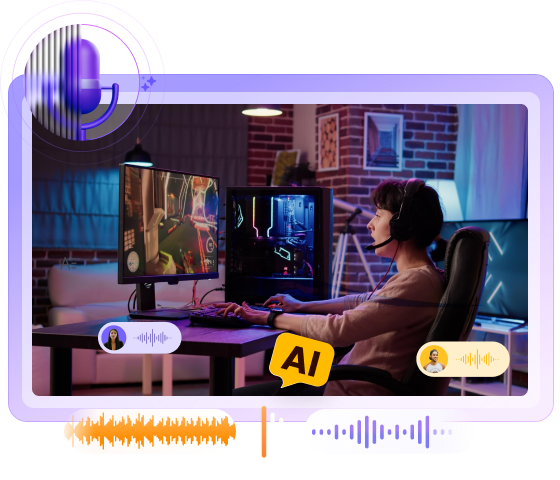Everything You Should Know About Brazilian Music
Brazilian music is a rich and diverse tapestry that reflects the country's unique cultural heritage. It's a blend of indigenous, African, and European influences that have evolved over centuries to create a variety of distinctive styles and genres, making Brazilian music popular.
What is Brazilian Music?
The history of the Brazilian music genre dates back to the 16th century when the Portuguese colonizers brought with them European musical traditions. Over time, these traditions mingled with the rhythms and melodies of the indigenous peoples and the African slaves brought to Brazil. This fusion gave birth to a plethora of Brazilian music stars and musical styles, such as Brazilian samba music each with its own unique flavor.
Main Characteristics of Brazilian Music
Some of the main characteristics of popular Brazilian music include:
- 1. Rhythmic Complexity: Brazilian music often features intricate rhythms that draw from African traditions. These rhythms are the backbone of many Brazilian music styles, providing a lively and dynamic feel.
- 2. Melodic Richness: The melodies in Brazilian music are typically expressive and emotive, often reflecting the country's diverse cultural influences. They can range from simple and catchy tunes to complex and sophisticated compositions.
- 3. Harmonic Diversity: The harmonies in Brazilian music are varied and can include everything from simple chord progressions to complex jazz-like arrangements. This harmonic diversity adds depth and richness to the music.
- 4. Innovative Instrumentation: Brazilian music makes use of a wide range of instruments, from traditional ones like the berimbau and the cavaquinho to modern ones like the guitar and the keyboard. This mix of instruments contributes to the unique sound of various Brazilian types of music.

These characteristics, along with the passionate and vibrant nature of Brazilian culture, make Brazilian music genres a captivating and enchanting experience for Brazilian music artists and listeners worldwide.
How to Make Brazilian Music Genre
Creating Brazilian music styles can be a thrilling journey, exploring the rich rhythms and melodies that define this vibrant genre. With advancements in technology, this process has become more accessible, especially with tools like HitPaw AI Music Generator.
HitPaw AI Music Generator is a cutting-edge tool that leverages artificial intelligence to help users create music across various genres, including different types of Brazilian music. It simplifies the music creation process for styles of Brazilian music, making it possible for both amateurs and professionals to produce authentic-sounding tracks themselves, not just YouTube Brazilian music.
Pros
- 1. User-Friendly Interface: The software is designed with a straightforward interface, making it easy for users to navigate and create music without needing extensive technical knowledge.
- 2. Customization Options: Users can customize their music by adjusting tempo, key, and other parameters, allowing for a personalized touch to their creations.
- 3. Diverse Music Styles: HitPaw AI Music Generator supports a wide range of music styles, enabling users to experiment with different Brazilian music genres.
- 4. Time-Saving: The AI-powered tool can generate music quickly, saving users time and effort compared to traditional music production methods.
Cons
- 1. Limited Creativity: While the tool offers customization options, the music generated is based on predefined algorithms, which may limit the creative possibilities compared to composing even Brazilian country music from scratch.
- 2. Dependency on Technology: Relying heavily on AI for music creation might lead to a lack of personal touch and emotional depth in the music.
- 3. Learning Curve: Although user-friendly, there may still be a learning curve for users unfamiliar with music production software.
Overall, HitPaw AI Music Generator provides a convenient and innovative way to create Brazilian music. It offers a balance between ease of use and creative flexibility, making it a valuable tool for anyone looking to explore the genre.
Steps on How To Generate Brazillian Music Genre
To generate traditional Brazilian music using HitPaw AI Music Generator, you can follow these steps:
- 1.Select "Text to Melodies" under "AI Music" in the left sidebar.
- 2.Enter your desired music lyrics and choose a preferred music theme.
- 3.Click "Generate" to create your music, which will appear in the right sidebar. Join as a member to download the music.
For changing music genres:
- 1.Choose "Change the musical genre" under "AI Music" in the left sidebar.
- 2.Import your audio/video files.
- 3.Select your preferred music genres and preview them.
- 4.Click "Generate" and wait a few seconds to get your music projects. Join as a member to download the music.

By following these steps, you can easily create Brazilian music using HitPaw AI Music Generator, even if you don't have formal musical training or composition skills.
Watch the following video to learn more details:
Different Types of Brazilian Music
Brazilian music encompasses a wide range of styles and genres, each with its own unique characteristics and influences. Here are some of the most notable types:
- 1.Samba: Often considered the quintessential Brazilian music, Samba is known for its lively rhythms and energetic dance. It originated in the Afro-Brazilian communities of Rio de Janeiro and has become a symbol of Brazilian national identity.
- 2.Bossa Nova: This genre emerged in the late 1950s and is characterized by its smooth, mellow sound. Bossa Nova combines elements of Samba and jazz and is often associated with the music of artists like João Gilberto and Antônio Carlos Jobim.
- 3.Forró: A popular genre in the Northeastern region of Brazil, Forró is characterized by its upbeat tempo and danceable rhythms. It often features an accordion, zabumba (a type of bass drum), and triangle.
- 4.Choro: Also known as "chorinho," Choro is a genre that originated in the 19th century and is considered one of the first urban popular music styles in Brazil. It is characterized by its intricate melodies and harmonies, often played on instruments like the flute, guitar, and cavaquinho.
Each of these genres contributes to the Brazilian music YouTube, Spotify and other platforms offer, reflecting the country's diverse cultural heritage and vibrant musical traditions.

FAQs of Brazilian Music
Q1. What Is That Brazilian Music Called?
A1. Brazilian music encompasses various regional styles influenced by European, American, African, and Amerindian forms. Some unique and original styles include forró, axé, sertanejo, samba, bossa nova, MPB, pagode, tropicália, choro, maracatu, frevo, and brega
Q2. What is the Most Typical Music in Brazil?
A2. Samba is the most known form of Brazilian music worldwide, especially because of the country's carnival. Bossa nova has also received much attention abroad since the 1950s, with Antônio Carlos Jobim being one of its most acclaimed composers and performers.
Q3. What is Brazil's Cultural Music?
A3. Brazil's cultural music is diverse, with samba, bossa nova, and forró being some of the most famous genres. These foundation rhythms are complemented by a contemporary scene, often pushing social boundaries.
Final Word
Brazilian music is a vibrant and diverse tapestry that reflects the country's rich cultural heritage. From the lively rhythms of samba to the smooth melodies of bossa nova, Brazilian music genres offer something for everyone. For those looking to explore the creation of Brazilian music, HitPaw AI Music Generator provides an innovative and user-friendly platform. Whether you're a seasoned musician or a newcomer to music production, HitPaw empowers you to generate authentic Brazilian music with ease. We highly recommend giving HitPaw AI Music Generator a try to bring your musical visions to life.







 HitPaw Photo Object Remover
HitPaw Photo Object Remover HitPaw Video Object Remover
HitPaw Video Object Remover HitPaw VikPea (Video Enhancer)
HitPaw VikPea (Video Enhancer)
Share this article:
Select the product rating:
Daniel Walker
Editor-in-Chief
My passion lies in bridging the gap between cutting-edge technology and everyday creativity. With years of hands-on experience, I create content that not only informs but inspires our audience to embrace digital tools confidently.
View all ArticlesLeave a Comment
Create your review for HitPaw articles